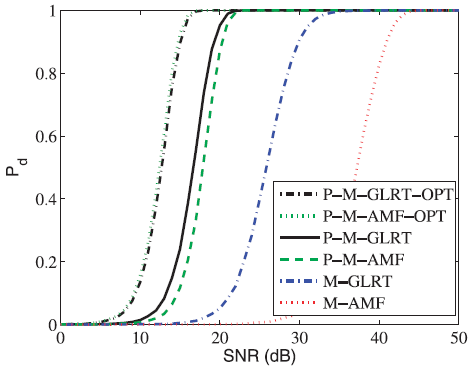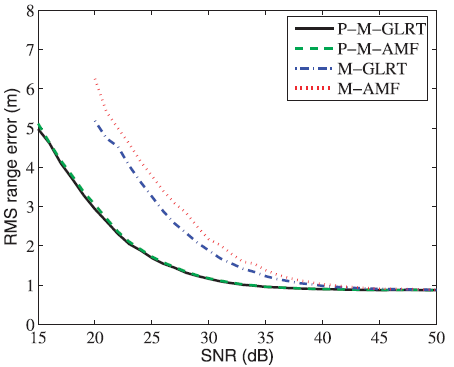In recent years, the design of space-time adaptive detection algorithms, that process data from antenna arrays, has received a vibrant attention from the radar community.
Traditional space-time adaptive detectors are developed for homogeneous environments. In practical scenarios, the available number of the secondary data is not always large enough. One way to circumvent the lack of a sufficient amount of homogeneous secondary data is to exploit the persymmetric structure of the disturbance covariance matrix. Moreover, most of existing detectors are based on the assumption that the target is exactly located at the corresponding sample time. Hence, they do not consider any spillover of target energy into the adjacent matched filter returns.
In recent days, five researchers from three nations of China, Canada and Italy work together to jointly exploit the spillover of target energy to consecutive range samples and the particular persymmetric structure of the disturbance covariance matrix, to improve the performances of detection and range localization.
Their research focuses on the design of new methods for adaptive detection and range estimation of a small target using a small training dataset. Two adaptive detectors relying on the generalized likelihood ratio test and on ad hoc design procedure are derived.
Remarkably, the new receivers ensure the constant false alarm rate property with respect to the disturbance covariance matrix. Moreover, They demand less computational complexity than the state-of-the-art counterparts which do not exploit the persymmetric property because the operations in the proposed methods are with real values instead of complex numbers.
Performance assessments, conducted on both simulated data and real recorded datasets demonstrate the effectiveness of the proposed detectors compared with both the traditional unstructured counterparts and the state-of-the-art persymmetric detectors which ignore the spillover.
The performance assessment, carried out using simulated data (using a complex Gaussian models), and the measured MIT dataset (a dataset with challenging heterogeneous effects found in real-world environments) shows that the proposed persymmetric detectors result in significant performance enhancements, in terms of both probability of detection and localization accuracy with respect to their traditional unstructured counterparts in open literature.
Furthermore, the newly designed detectors outperform the state-of-the-art persymmetric detectors which ignore the spillover.
Fig.1shows that proposed receivers, the P-M-GLRT (Persymmetric Modified Kelly’s Generalized Likelihood Ratio Test) and the P-M-AMF (Persymmetric Modified Adaptive Matched Filter) exhibit better detection performance with respect to the classic localization detectors, i.e., the M-GLRT and the M-AMF. Meanwhile, the new receivers ensure better estimation capabilities than their counterparts, as illustrated in Fig. 2. The superior performances are confirmed by the analysis on real radar data.
As a final remark, possible future research tracks might include the design of joint algorithms for detection and localization for non-Gaussian scenarios, as well as polarization processing. Besides, the possibility of employing reduced dimension/rank techniques in combination with the energy spilover and presymetry is a good idea for future further investigations. It is also of interest to compare the proposed methods to reduced dimension/rank space-time adaptive processing methods.
Funding for this research came from the National Natural Science Foundation of China (NSFC: 61172166 and 61302158).

Fig. 1 Pd versus SNR (Image by HAO)

Fig. 2 RMS error versus SNR (Image by HAO)
Reference:
HAO Chengpeng, Saeed Gazor, Goffredo Foglia , LIU Bin, HOU Chaohuan. Persymmetric Adaptive Detection and Range Estimation of a Small Target. IEEE Transactions on Aerospace and Electronic Systems (Vol. 51, No. 4, January 2016, pp. 2590-2604). DOI:10.1109/TAES.2015.140517
Contact:
HAO Chengpeng
Institute of Acoustics, Chinese Academy of Sciences, 100190 Beijing, China
E-mail: haochengp@mail.ioa.ac.cn